New record and scientific research. Completed the sixth flight of the X-37B spaceplane
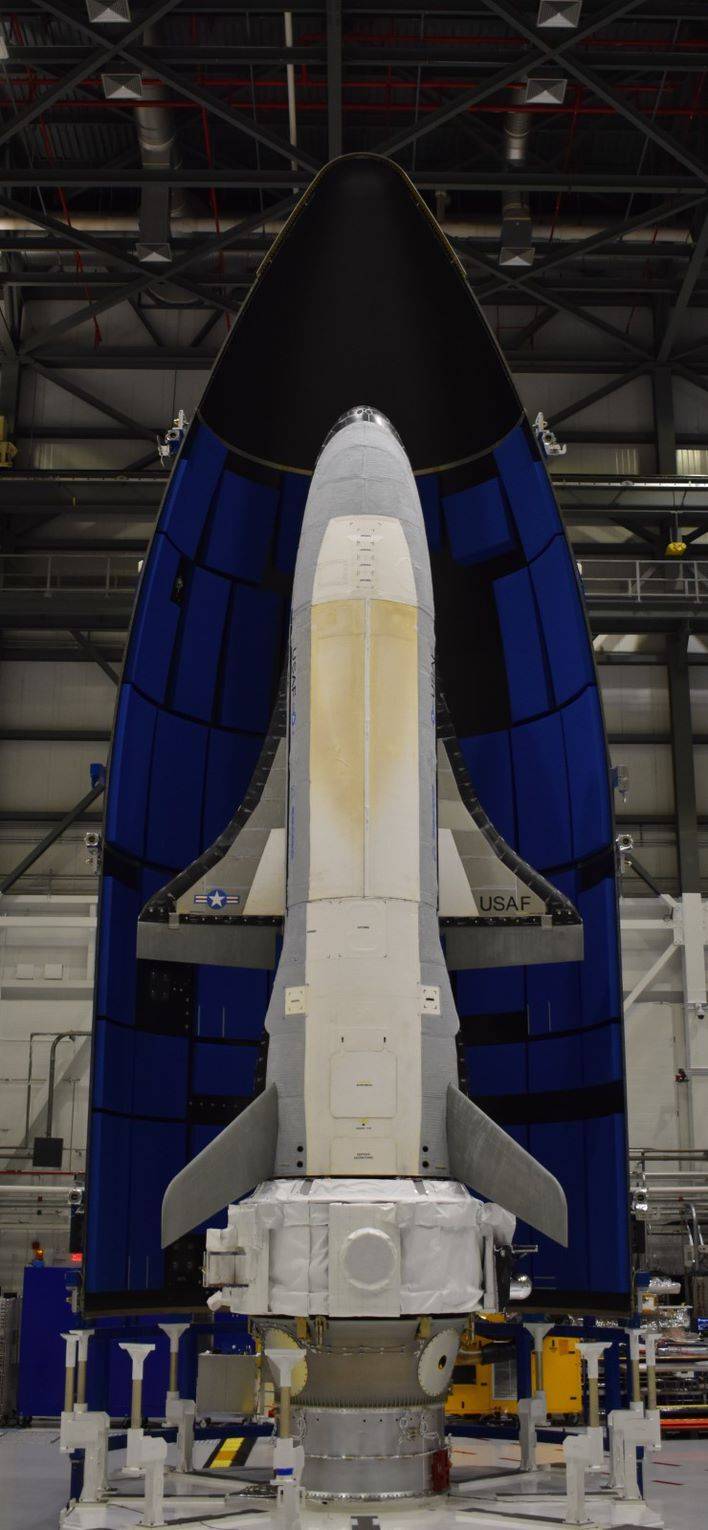
X-37B in preparation for the OTV-6 mission, May 2020
The US Space and Air Force continue a series of experiments with the Boeing X-37B multi-purpose reusable spacecraft. A few days ago, the next, already sixth, flight of such a spaceplane, which lasted two and a half years, ended. As before, the device updated the flight duration record, and also conducted several different experiments in the interests of various structures of the Pentagon and NASA.
New record
According to the X-37B project, two spaceplanes were built. The first of them went into space for the first time in April 2012 and stayed in orbit for 224 days. Its second flight, which became the third mission under the program, took place in 2012-14. and took 674 days. Subsequently, two long flights were performed by the second prototype, while the first one was undergoing the necessary training.
The sixth launch under the program and the third for the first X-737B took place on May 17, 2020. The organization of this mission for the first time in its stories engaged in the newly formed Space Force. At the same time, they received the necessary support from the Air Force, by order of which the spaceplane was created and previous launches were carried out. In addition, NASA played a role in the sixth mission.
The third launch of the first prototype took place at one of the sites of the Kennedy Space Center. To launch the X-37B, as in several previous launches, the Atlas V 501 launch vehicle was used. Shortly after launch, at the specified time, the spacecraft entered the calculated orbit and began to perform its tasks. The mission received the internal project designation OTV-6 and the Space Force Index USSF-7. The spacecraft in orbit was designated USA-299.
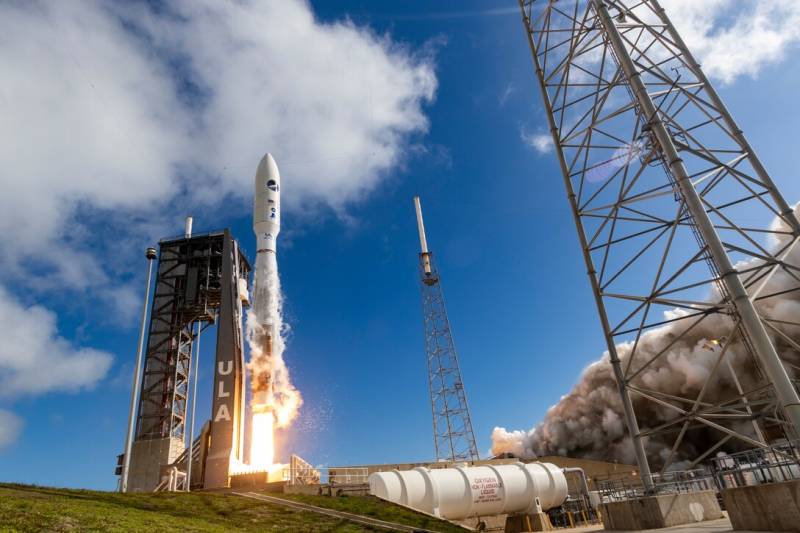
Launch of the Atlas V rocket with a spaceplane on board, May 17, 2020
A few days after launch, no later than the end of May 2020, the X-37B dropped a payload in the form of a small FalconSat-8 / USA-300 satellite. In parallel, apparently, certain studies and experiments were carried out. However, as before, the bulk of information about scientific and practical work remained secret.
The sixth flight of the X-37B continued until November 12, 2022. At the estimated time, the device deorbited, entered the dense layers of the atmosphere along a ballistic trajectory, and then performed a level flight to the Space Center airfield and made a soft landing. The total flight duration was 908 days. 21 h and 8 min. At the moment, this is the longest mission under the X-37B project.
Since 2012, two experimental spaceplanes have made six flights. The total duration of the missions exceeded 3774 days. – more than 10 years and 4 months. The first prototype completed three flights and spent more than 1808 days in orbit. Despite the new record, in terms of flight time, it is still inferior to the second aircraft, which flew for more than 1966 days.
Scientific tasks
It is known that both X-37Bs are used to conduct various experiments in the interests of Pentagon research organizations. The research and experiments of the first five missions remained secret and have not yet been disclosed. The OTV-6 flight was an exception - the program participants revealed part of their plans for the first time.
Experienced X-37B launched for the first time in a modified configuration. In the tail section of the spaceplane, the so-called. service module - an additional flat-shaped case to accommodate one or another payload. Various instruments and devices were placed in this module and in the cargo compartment of the fuselage. In particular, the spaceplane took on board a small FalconSat-8 satellite.
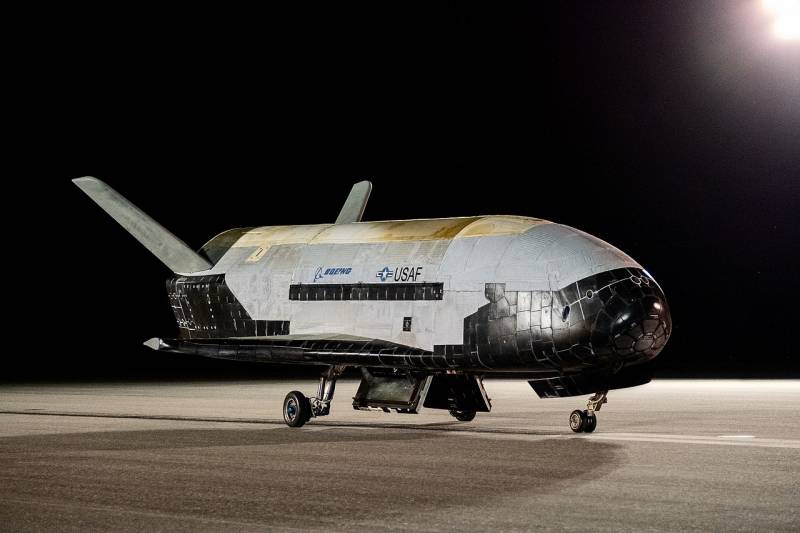
X-37B after landing, November 12, 2022
It should be noted that the FalconSat-8 product was also launched in the interests of the Pentagon. It was developed by the Air Force Academy to conduct several experiments in space. On board a compact satellite weighing approx. 135 kg placed experimental systems of various types. How they were tested is not specified, but it can be expected that in the future these events will affect the emergence and development of some new technologies for the Air Force and space forces.
The Naval Research Laboratory placed its instruments on the X-37B. Her experimental complex included solar panels, a microwave generator and auxiliary devices. It was planned to study the possibility of generating electricity in orbit from the Sun with its subsequent transmission to Earth.
NASA conducted two experiments at once. Samples of promising materials and containers with seeds of various plants were installed on the spaceplane. It was planned to test how these samples will endure the flight of a long duration and the impact of various factors. After planting the X-37B, the materials and seeds were sent for analysis.
It is very likely that the Space and Air Force also conducted some secret experiments of one kind or another. In particular, various maneuvers of the spaceplane and a change of orbits were once again recorded. In addition, other studies of a military nature that could not be observed from Earth cannot be ruled out.
Unconfirmed features
Product X-37B is a reusable spacecraft with the ability to fly in the atmosphere. Outwardly, it looks like an aircraft with a large fuselage, swept low wing and V-tail. The total length of such a spaceplane is less than 9 m, the wingspan is 4,55 m. The maximum takeoff weight does not exceed 5 tons. There is a sustainer rocket engine and a set of low-power maneuvering ones. In orbit, power is supplied by solar panels and batteries.
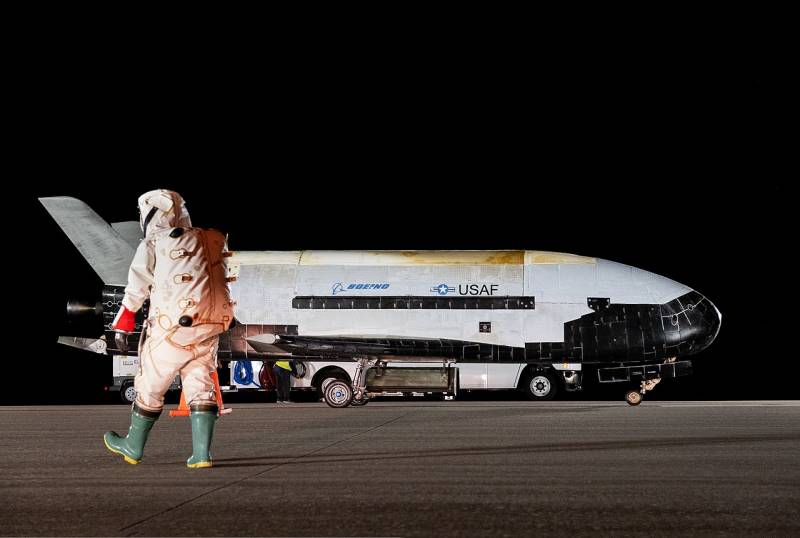
In the central part of the airframe there is a cargo compartment with a length of more than 2 m and a diameter of approx. 1,2 x 1,2 m. In addition, a drop module can be attached to the tail of the device. In the inner compartment and the outer module, the spaceplane can carry various payload options, although with restrictions on dimensions and weight. The exact mass of the load is unknown; according to various estimates, it can reach 500-900 kg.
The X-37B is able to stay and operate in low Earth orbit for a long time. With the help of a standard propulsion system, it can perform maneuvers and change orbit. The ability to maneuver allows the spaceplane to work as a so-called. inspector satellite. It can rendezvous with selected spacecraft, observe them, or influence them in one way or another. During one flight, he can study several satellites in different orbits, return to previously examined ones, etc.
In addition, the X-37B can solve transport problems. In its cargo bay, it can launch various satellites into low orbits - which has already been demonstrated in practice. At the same time, he can take on board several devices and, maneuvering, deliver them sequentially to different orbits. It cannot be ruled out that the spaceplane can also solve the inverse problem, capturing and returning various objects to the ground.
The payload of the device can be various reconnaissance equipment. In this case, he is able to survey areas in different ranges, conduct electronic intelligence, etc. High flight duration and ability to maneuver will give obvious advantages in reconnaissance.
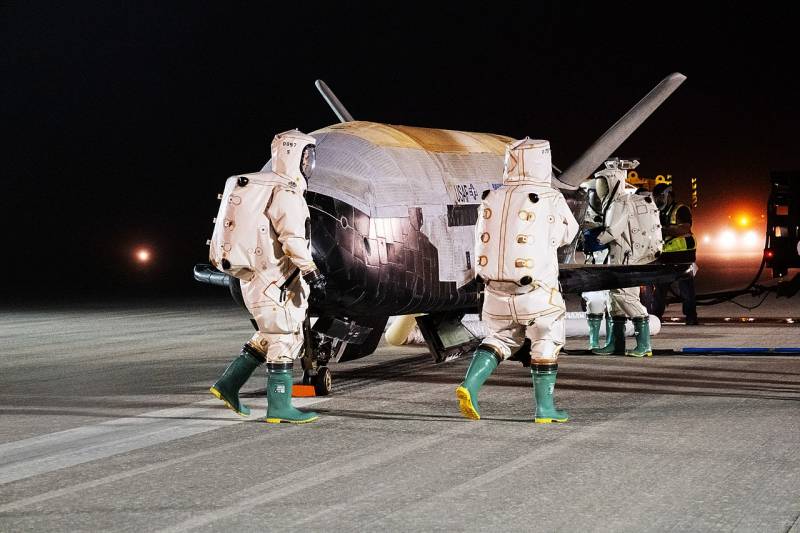
With ample opportunities to solve various tasks, the X-37B has obvious operational advantages. So, it is reusable, which reduces the cost of each mission. It is relatively simple in terms of flight preparation. It also simplifies the development and preparation of payloads to some extent. The spaceplane is compatible with various launch vehicles, and this has already been demonstrated in practice.
However, the X-37B still retains its experimental status and remains at the stage of trial operation. How long such work will continue, and how many flights will be completed before full adoption into service, is unknown. However, the current status does not prevent the two spaceplanes from going into orbit and performing various tasks, mostly secret ones.
Between flights
On November 12, one of the experimental X-37Bs completed its next flight, during which it conducted a new series of experiments and set another record for the duration of being in orbit. It is obvious that the program of experimental launches of spaceplanes will not end there. Over the next few months, the OTV-7 mission may start.
Apparently, the Pentagon and related structures will again not disclose all the details of the launch and subsequent flight. However, such information is of particular interest. It will determine what the US space force is working on now, and what opportunities they can get in the future.
Information